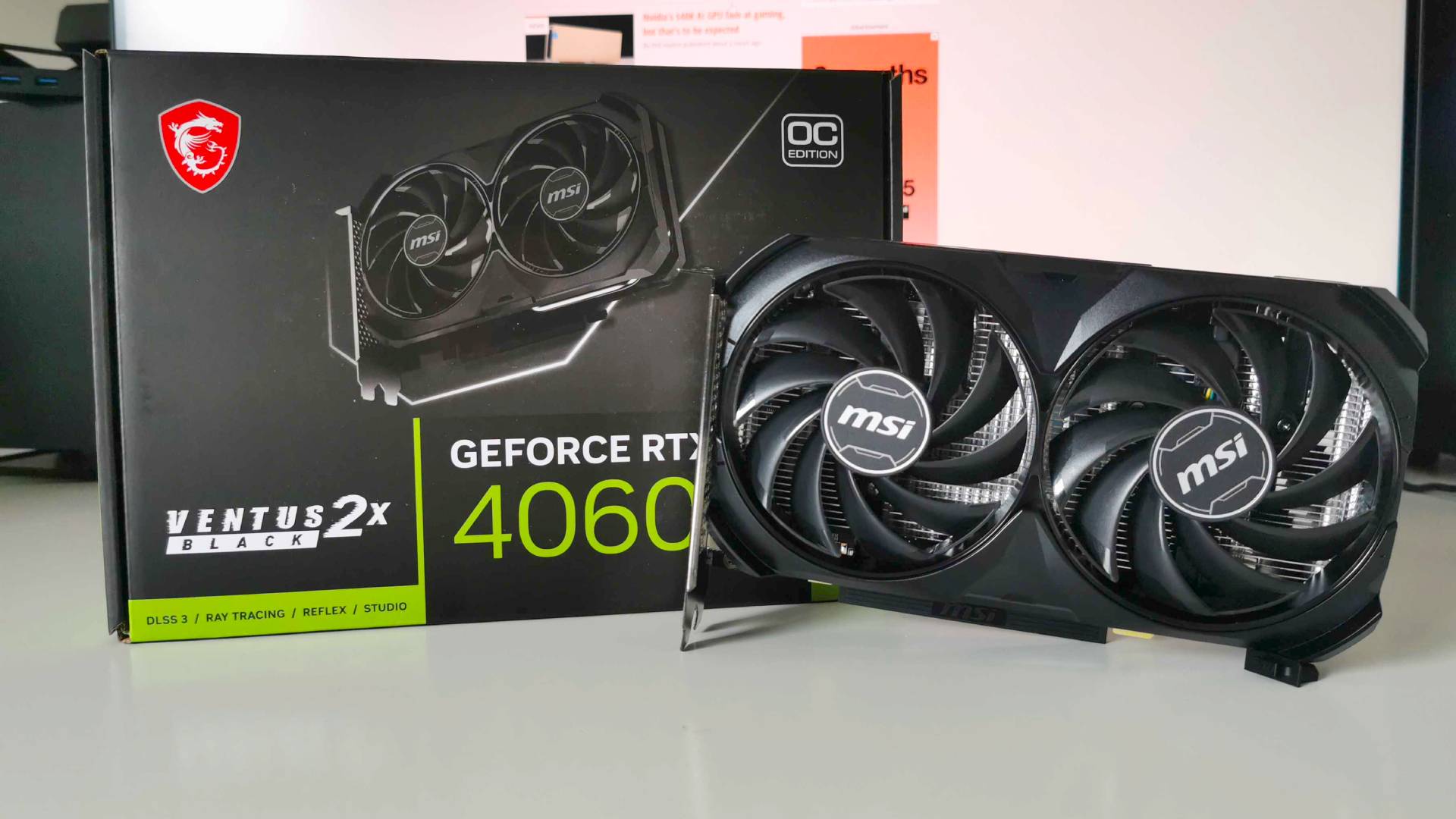GamesRadar+ Verdict
The Nvidia RTX 4060 is a capable 1080p graphics card with a DLSS 3 punch. While it admittedly feels like AI upscaling and Frame Generation does a lot of heavy lifting, the new 60-series GPU on the block does hold up against the RTX 3060. It’s also surprisingly got 1440p potential, making it a great upgrade for anyone who’s been rocking an older entry-level card. Just keep in mind that AMD Radeon RX 7600 is available for slightly cheaper, and future FSR 3.0 support could give it more of an edge.
Pros
- +
Packs a 1080p punch
- +
Has 1440p potential
- +
Dinky size and standard power connector
Cons
- -
DLSS does a lot of heavy lifting
- -
Slightly more expensive than current rivals
- -
8GB VRAM could limit future abilities
Why you can trust GamesRadar+
It feels like I’ve been waiting an eternity to test the Nvidia RTX 4060, but the entry-level option has finally arrived to crash the premium GPU party. I say crash, but I guess if you’re not looking for a capable 1080p graphics card in 2023, you’re probably going to be busy watching its GeForce siblings flex. I’m not going to judge you either way, but it’s hard to not feel salty about the facts, as the 60-class freshman needs to effectively pull the same DLSS stunts as the sophomores to stand out.
Look, I’m not dunking on the Nvidia RTX 4060 for relying on DLSS 3 and Frame Generation, as most of the best graphics card contenders boast AI upscaling abilities. I’d even go as far to say it’s a solid reason to pick up the Lovelace GPU over favourites like the RTX 3060 or the AMD RX 6600 XT. For $299, you’ll get a card that can handle the demands of ray tracing and ultra settings, and Frame Generation actually makes 1440p totally viable. However, you’ll need to stick to the confines of 1080p where DLSS is unavailable, and that situation will crop up across your Steam library.
Unlike the RTX 4060 Ti, its non-Ti counterpart is actually cheaper than its predecessor. That matters a lot, as pitching an upgrade that’s the same price is a bit of a hard sell. Sure, the RTX 3060 Ti can’t use Frame Generation to reach higher frame rate heights, but natively, the gap is narrower than you’d perhaps expect. In any case, the RTX 4060 is now the entry-level card to beat, which could happen sooner than later if the AMD Radeon RX 6600 gains similar FSR 3.0 abilities this year.
Design and features
Before we dive in, it’s worth noting that there is no Nvidia RTX 4060 Founders Edition this time around. So, we’ll be taking a look at the MSI Ventus Black 2x model instead, which features a custom shroud, cooling setup, and backplate that’s in keeping with the manufacturer’s aesthetic.
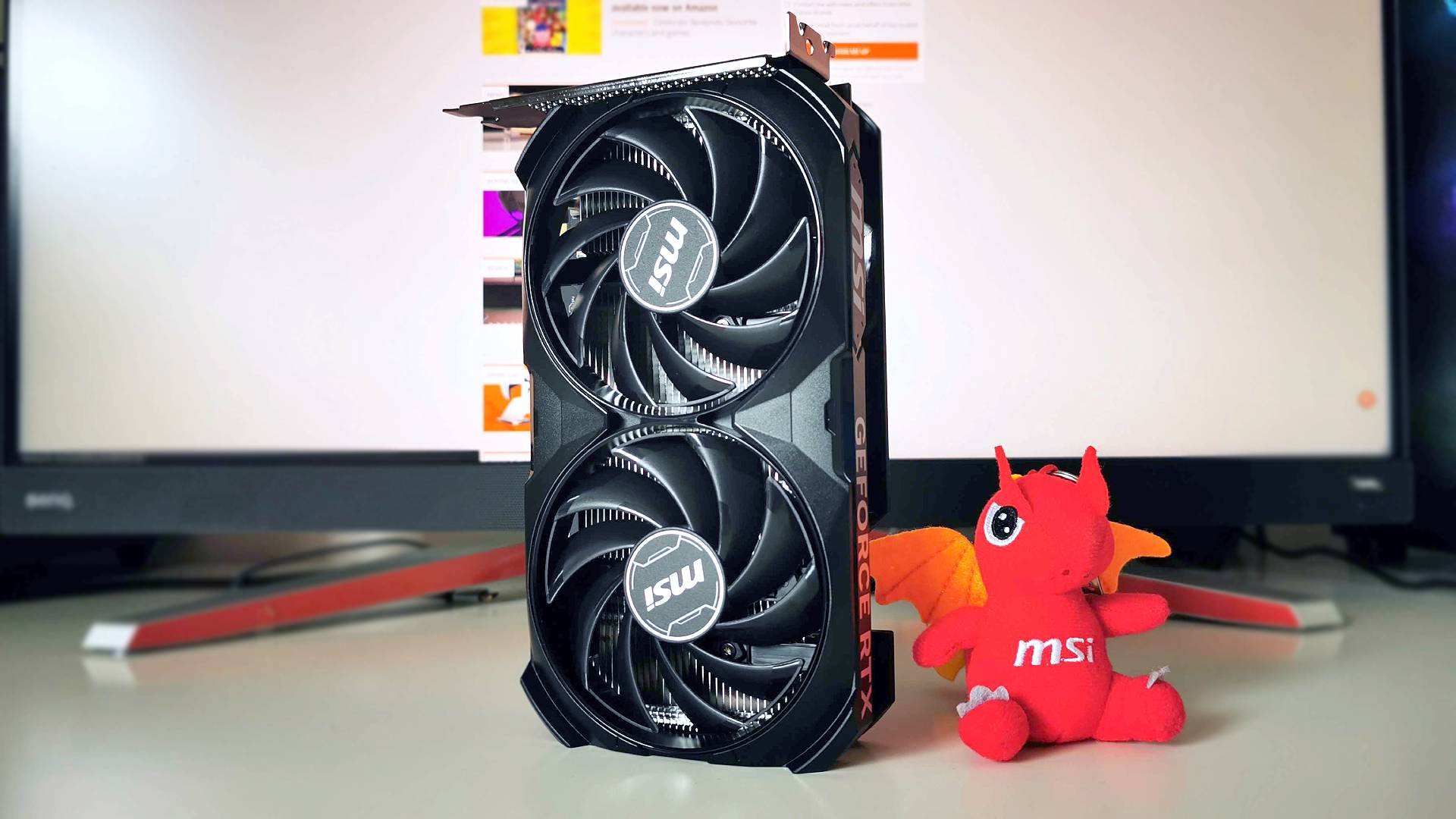
Upon receiving the RTX 4060 in the mail, I actually didn’t realise the neat package I was handed had the GPU inside. That’s largely because I’ve been exposed to ridiculously chonky GPUs like the RTX 4090 and 4080 since their debut last year, and even the RTX 4070 Ti is hardly on the small side. Daftness aside, I really appreciate the fact that the 4060 is a smol boi, as we could have ended up with something that bit larger than the RTX 3060.
Inside the box, you’ll get an RTX 4060 graphics card and that’s it. But wait, I hear you cry, shouldn’t it come with one of those annoying 12VHPWR adapters? Nope, unlike the majority of new GeForce cards, the 4060 uses a standard 8-pin connector, meaning you won’t have to clutter your gaming PC with dongles. The decision makes a ton of sense, especially when you consider the fact that Nvidia is hoping to convince budget gamers with a GTX 1060 or an RTX 20-series card to upgrade here, as the connector type should make for a straight swap.
If you’re already rocking an older 60-class GPU, you’ll know what to expect from the RTX 4060 design-wise. Subtlety is the name of the game, and the only bold thing about the Ventus Black 2x is the large reminder of what it is on the edge of the card. This is hardly a con, as there’s no point adding flashy RGB or a striking shroud to something that’ll likely live in a low-key case. Just think of the 4060 as a hard-working member of the backstage crew, rather than the flamboyant lead actor in this particular gaming PC show.

In terms of GeForce-specific features you can’t physically see, the RTX 4060 comes with Nvidia DLSS 3 superpowers. For those of you unfamiliar with team green’s GPU tech, ‘Deep Learning Super Sampling’ is an AI-powered way to boost fps beyond native capabilities. DLSS 2 is available to all RTX graphics cards, meaning you can enhance performance by scaling up lower-resolution frames. However, the aforementioned latest version is exclusive to RTX 40-series cards, as it includes a fancy additional trick called ‘Frame Generation’.
What’s Frame Generation? Well, it’s a feature that effectively increases fps by generating additional frames using AI. In other words, it guesses what missing frames should look like and adds them into the mix. Unlike the dynamic scaling portion of DLSS, you won’t be able to distinguish between generated frames and ones actually produced by your GPU, resulting in something that feels like a caveat-free performance boost. The catch? You’ll only be able to use the GeForce tool with specific games, but the list is admittedly growing.
Specs

Exterior expectations aside, let’s chat about Nvidia RTX 4060 specs. The long-awaited 60-class RTX 4000 GPU comes armed with 8GB GDDR6 VRAM, 3,072 CUDA cores, and boost clock speeds up to 2.46 GHz. If you’ve already looked into the RTX 3060, you’ll probably notice something of a specs sheet resemblance on paper. So, what’s the difference? Well, the 40-series card packs a shiny new Lovelace GPU and 4th Generation Tensor cores, with the latter providing the setup with enhanced AI abilities.
| Price | $299 / £289 |
| GPU | AD106 |
| CUDA Cores | 3,072 |
| Tensor cores | 184 (Fourth gen) |
| RT cores | 30 (Third gen) |
| Base clock | 1.83Ghz |
| Boost clock | 2.46Ghz |
| VRAM | 8GB GDDR6 |
Releasing an 8GB graphics card in 2023 has become somewhat of a controversy, and the RTX 4060 Ti was accused of not wielding enough VRAM upon arrival. Personally, I’d prefer it if 12GB was the new minimum memory bar, but that’s only because some new releases guzzle VRAM due to optimization issues (looking at you, Star Wars Jedi: Survivor). The important thing to remember is that Nvidia is specifically catering to 1080p gameplay with the RTX 4060, and 8GB is widely considered the perfect configuration for that resolution.
As for ports, the RTX 4060 features three DisplayPort 1.4a inputs and HDMI 2.1a. Both standards have you covered up to 4K 240Hz, while the former can theoretically handle 8K 60fps. Not that I’d recommend forcing this card to deal with anything beyond 1440p when playing new PC games, but you’ll be able to mess around with expensive gaming monitors and 8K TVs for gaming if you feel inclined.
The RTX 4060 also isn’t greedy in terms of power, as its ultra-low 110w TDP (Thermal Design Power) will help it guzzle less juice than the RTX 3060. If, like me, you’re always a tad nervous to check your electricity meter after an indulgent gaming session, this is going to matter, and it factors into the overall cost of the experience post-purchase.
Performance
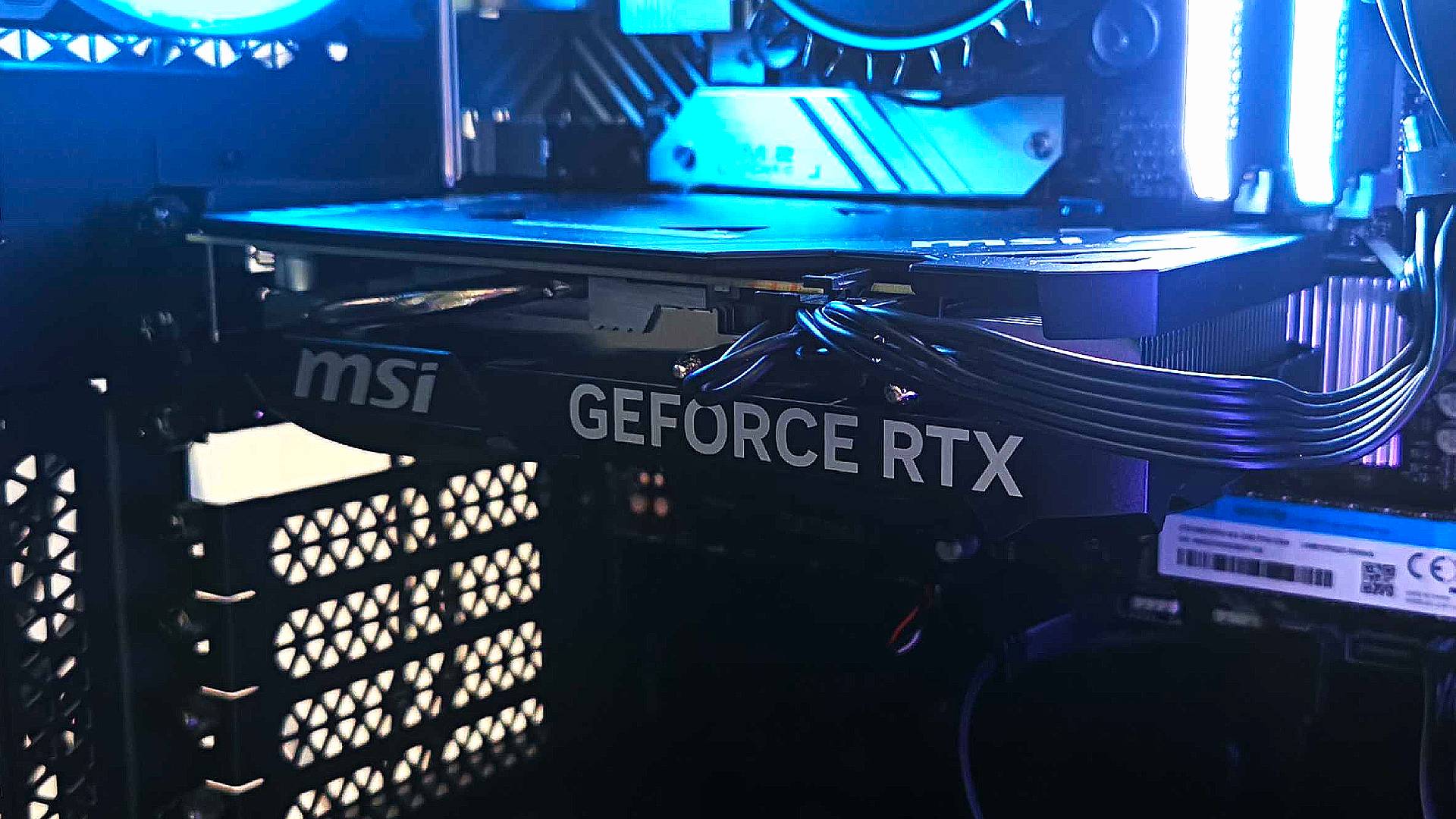
They say the proof is in the performance pudding, and as you’d expect, I’ve whipped up some Nvidia RTX 4060 benchmarks. Earlier this week, I touched on DLSS frame rate expectations in my Cyberpunk 2077 RTX 4060 preview, but the following tests should help paint a broader performance picture. That includes tests at 1080p, 1440p, and 4K, as I do enjoy making graphics cards sweat.
| Ultra/highest settings | 1080p | 1440p | 4K |
|---|---|---|---|
| Cyberpunk 2077 | 76fps | 46fps | 22fps |
| Hitman 3 | 100fps | 88fps | 53fps |
| Total War: Wahammer 3 | 84fps | 54fps | 28fps |
| Shadow of the Tomb Raider | 131fps | 97fps | 47fps |
| Returnal | 96fps | 71fps | 40fps |
| Ultra/highest settings | 1080p | 1440p | 4K |
|---|---|---|---|
| Cyberpunk 2077 | 117fps | 94fps | 51fps |
| Hitman 3 | 100fps | 136fps | 72fps |
| Total War: Wahammer 3 | N/A | N/A | N/A |
| Shadow of the Tomb Raider | 202fps | 146fps | 79fps |
| Returnal | 162fps | 137fps | 56fps |
We’ll start where we left off with Cyberpunk 2077, as my review benchmarks target ultra settings with ray tracing switched off. Without DLSS, the RTX 4060 can crank out around 76fps at 1080p – a decent effort when you consider the demanding nature of the dystopian romp.
Of course, if you harness the power of frame generation, you’ll be able to ramp things up to around 117fps, and you’ll struggle to notice a difference in visual quality. Doing so also means you can actually play at 1440p with the same settings enabled, as you’ll be able to comfortably hit over 90fps.
Timespy: 10,096
Fire Strike: 23,080
If you’re not really fussed about venturing beyond 1080p, you could instead switch on ray tracing and enjoy similar performance, something that’d be a struggle using other entry-level cards. On the flip side, I’d even take it a step further and say that Cyberpunk 2077 is playable on a RTX 4060 at 4K, but you’ll definitely fall short of that 60fps sweet spot. DLSS 3 may feel like magic, but it can’t work miracles, and this card would rather impress you with ultra settings enabled at 1080p.
The RTX 4060 also shines in another benchmarking favorite, Hitman 3, as you’ll be able to hit 100fps without using AI tomfoolery. That said, enabling Frame Generation dials average frame rates up to 136fps, leaving plenty of headroom to increase resolution or enable ray tracing. Remarkably, I managed to achieve 72fps in 4K tests, but the skeptic in me reckons fps dips would be on the cards, as I also measured lows of around 19fps.
Both Shadow of the Tomb Raider and Returnal tell a similar tale when it comes to DLSS 3 on and off, but I want to draw your attention specifically to Total War: Warhammer 3. The game completely lacks any sort of upscaling support, making it a good native performance indicator. As you can see, the battle sim ran at around 84fps at 1080p, but plunges below the 60fps depths at 1440p and 4K. That’s to be expected, as the card isn’t designed with modern QHD or UHD gameplay in mind, but it proves when DLSS isn’t dwelling within a settings menu, it’s sorely missed.
In addition to the above benchmark selection, I also used the RTX 4060 as my daily driver. During that time, I decided it was about time I took the new System Shock remake for a spin, and was actually able to play at 4K and still maintain 72fps on average. A comfortable experience to say the least, which is a good thing given that the game’s claustrophobic level design is stressful enough.
I’ve yet to test an RTX 40-series graphics card with worrying thermals, and the RTX 4060 is no exception. During testing, temperatures sat largely around 70°c for the most part under full load, which I’ll attribute in part to MSI’s efficient dual fan configuration. Your mileage may vary depending on your manufacturer of choice, but I can vouch for the Ventus Black 2x’s cooling abilities.
Should you buy the Nvidia RTX 4060?
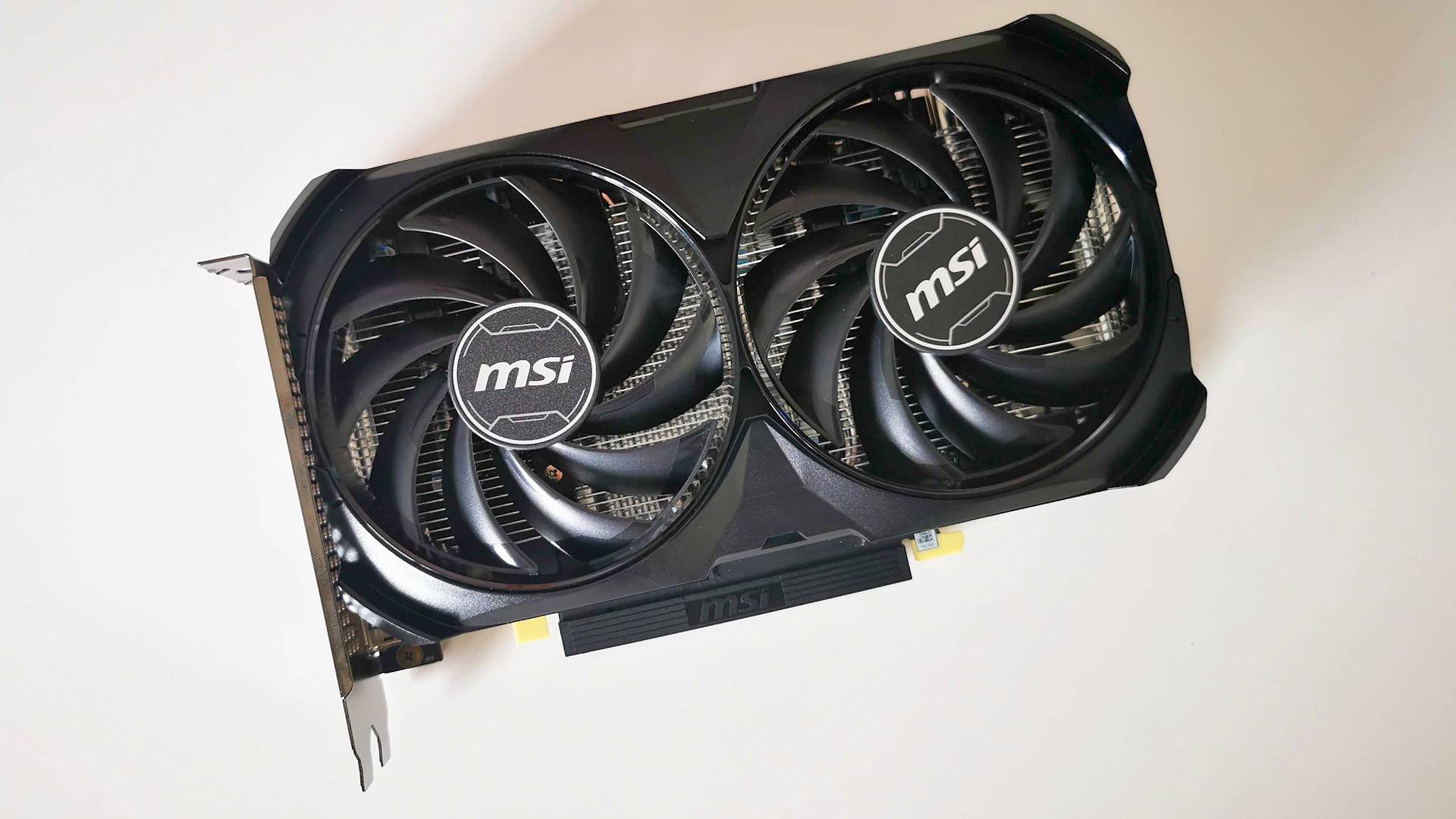
If you’re planning on upgrading your aging GeForce GTX 1060, or even one of its RTX 20-series successors, then the RTX 4060 is a solid entry-level option. That’s provided you’re not looking for something that’ll strut its stuff in new releases at 1440p or 4K, as this board isn’t really designed to punch above 1080p without caveats.
However, opting for the RTX 4060 is going to furnish your gaming PC with respectable ray tracing capabilities, and DLSS 3 makes short work of ultra settings. As always, performance isn’t guaranteed, as you never know when a game is going to arrive with an unoptimized appetite for memory. In those scenarios, the 4060’s 8GB VRAM could pose an issue, but the same would be true for even premium GPUs aiming to deliver 4K.
Wondering whether you should swap your RTX 3060 for a RTX 4060? Well, you’ll see a decent uplift if you do, and Frame Generation does make all the difference. Despite this, I wouldn’t urge you to make the leap to Lovelace from Ampere if you’re already rocking the 30-series card, as the native generational difference is somewhat unremarkable.

While its $299 tag makes the Nvidia RTX 4060 price point more palatable than previous RTX 4000 releases, I’m also wary that cheaper rivals are preparing for battle. AMD’s RTX 4060 Ti equivalent, the RX 7600, now comes in at just $269, and you can grab an Intel Arc A770 for around the same price. On paper, both alternatives sound like a better deal, but the new-gen Radeon card hasn’t been granted FSR 3.0 AI powers yet, and Intel’s Xe Super Sampling isn’t really comparable.
Ultimately, the Nvidia RTX 4060 is a DLSS darling with 1440p potential. A nice surprise given that it’s marketed to target 1080p, but the graphics card is a testament to the benefits of AI. That latter statement makes me feel slightly queasy, as I’m in the camp that thinks artificial intelligence is, to put it lightly, a menace. Nevertheless, when it comes to the realm of gaming PCs, the tech is an ally that’ll help you fight off sinister system requirements looking to stress out your rig. That’s not to say you can’t rely on native capabilities, but when you go to play a game without upscaling support, you’re sure to feel its absence.
How we tested the Nvidia RTX 4060
To test the Nvidia RTX 4060, I used it within my trusty gaming PC every day for both work and play over the course of two weeks. My main benchmark tests used games like Cyberpunk 2077, Hitman 3, and Returnal to accurately measure 1080p, 1440p, and 4K performance, but I also played games in my spare time like System Shock to get a qualitative feel for the GPU's capabilities.
I've tested a variety of different RTX 4000 GPUs, including the RTX 4090, RTX 4080, and RTX 4070 Ti, so I used this experience while testing the RTX 4060. I've also spent significant time with previous Nvidia 60-class cards like the RTX 3060 in the past, which enabled me to compare the experience.
For more information on how we test graphics cards, check out the full GamesRadar+ Hardware Policy.
Looking for an entire rig? Check out our best Alienware gaming PC list for our favourite Aroura builds. Alternatively, check out the best gaming laptops and take the desktop experience with you on the go.
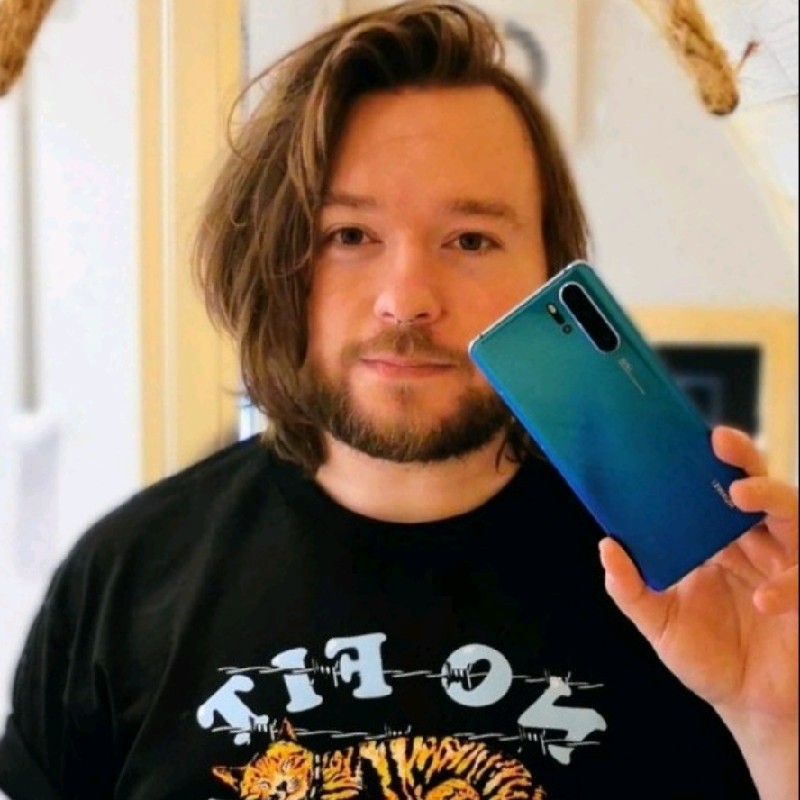
I’ve been messing around with PCs, video game consoles, and tech since before I could speak. Don’t get me wrong, I kickstarted my relationship with technology by jamming a Hot Wheels double-decker bus into my parent’s VCR, but we all have to start somewhere. I even somehow managed to become a walking, talking buyer’s guide at my teenage supermarket job, which helped me accept my career fate. So, rather than try to realise my musician dreams, or see out my University degree, I started running my own retro pop culture site and writing about video games and tech for the likes of TechRadar, The Daily Star, and the BBC before eventually ending up with a job covering graphics card shenanigans at PCGamesN. Now, I’m your friendly neighbourhood Hardware Editor at GamesRadar, and it’s my job to make sure you can kick butt in all your favourite games using the best gaming hardware, whether you’re a sucker for handhelds like the Steam Deck and Nintendo Switch or a hardcore gaming PC enthusiast.
